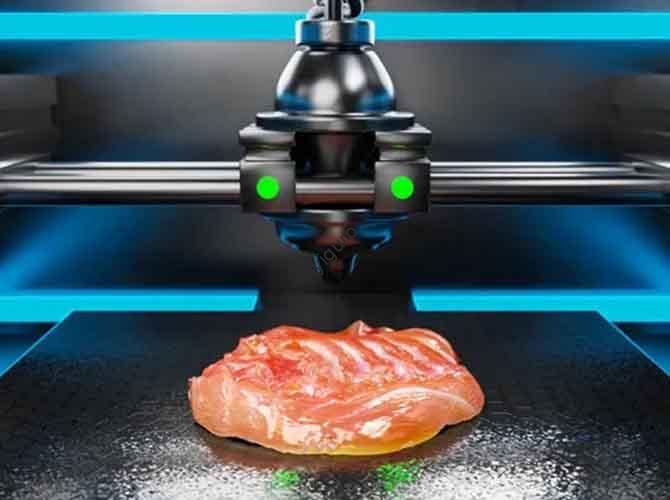En el mundo de fabricación de ritmo rápido de hoy, 3D Tecnología de impresión (también llamado fabricación aditiva) se ha convertido en un cambio de juego. By building objects layer by layer from digital models, it creates products that were once hard or impossible to make with traditional methods. But what specific 3D printing products are making waves? Let’s explore how these products solve real problems across key industries.
1. 3D Printing Products in Healthcare: Personalized Solutions for Better Patient Care
Healthcare is one of the biggest beneficiaries of 3D impresión. The core advantage here is personalización—products tailored to each patient’s unique anatomy. Below is a breakdown of common medical 3D printing products and their benefits:
| Tipo de producto | Caso de uso clave | Problema resuelto | Resultado de ejemplo |
| Guías quirúrgicos | Precision during operations (P.EJ., dental surgery) | Inaccurate incisions, longer surgery time | 30% shorter surgery time for dental procedures |
| Implantes dentales | Replacing missing teeth | Poor fit, painful recovery | Implants match gum shape; recovery cut by 2 semanas |
| Prótesis & Orthotics | Supporting disabled patients (P.EJ., artificial limbs) | Pesado, uncomfortable, unnatural appearance | Prótesis 40% encendedor; more natural movement |
| Bioprinted Tissue (Riñonal&D) | Future organ transplantation | Shortage of donor organs, rejection risks | Lab-grown skin used for burn patients in trials |
Por ejemplo, a child born with a limb difference can get a 3D-printed prosthetic that grows with them—something traditional prosthetics (which need frequent replacements) no puedo hacer. This not only saves families money but also boosts the child’s confidence.
2. Aeroespacial & Automotor: 3D Printing Products for Lightweight, Efficient Designs
In industries where weight and performance matter most, 3D printing products shine. Traditional manufacturing often struggles with complex shapes or wastes material—but 3D printing fixes both.
Key Products & Their Impact (List Format)
- Piezas del motor: Turbine blades and fuel nozzles with intricate internal channels. These channels improve airflow, cutting fuel use by up to 15%.
- Aircraft Structural Parts: 3D-printed brackets reduce aircraft weight by 20%, which lowers carbon emissions.
- Rapid Prototypes: Car designers can print a full-scale dashboard prototype in 2 días (VS. 2 semanas con métodos tradicionales), speeding up product launches.
¿Por qué es esto importante?? For aerospace companies, every pound saved means millions in fuel costs over a plane’s lifetime. Para fabricantes de automóviles, faster prototyping helps them stay ahead in a competitive market.
3. Bienes de consumo: 3D Printing Products for Personal Style
Ever wanted a phone case with your favorite artwork, or shoes that fit your feet perfectly? 3D printing products make this possible.
Cómo funciona (Causa & Effect Chain)
- Consumer Requests Customization: You want a necklace with your pet’s face.
- Designer Creates Digital Model: Uses a 3D scanner to capture your pet’s features.
- Printer Builds the Product: Layers of metal or plastic form the necklace in 4 horas.
- You Receive a One-of-a-Kind Item: No two necklaces are the same—solving the problem of “mass-produced boredom.”
Common consumer 3D printing products include:
- Fundas telefónicas personalizadas
- Personalized jewelry (anillos, esposas)
- Orthopedic insoles (molded to your foot’s shape)
- Unique home decor (jarrones, bases de lámparas)
4. Other Key Sectors: Where 3D Printing Products Add Value
It’s not just healthcare, aeroespacial, and consumer goods—3D printing is expanding into more fields. Here’s a quick look:
| Sector | 3D Printing Product | Problema resuelto |
| Electrónica | 3D-printed circuit boards | Limited space for complex circuits |
| Educación | Modelos anatómicos (P.EJ., human heart) | Students struggle to visualize 2D textbook images |
| Industria alimentaria | Custom-shaped chocolate/candy | Inability to make unique food for dietary needs |
| Arte | Sculptures and installations | Artists can’t create complex, large-scale designs easily |
Por ejemplo, in schools, a 3D-printed human heart model lets students hold and examine parts like valves—something a textbook can’t do. This makes biology lessons more engaging and helps students remember key concepts better.
Yigu Technology’s Perspective on 3D Printing Products
En la tecnología yigu, creemos 3D printing products are no longer just “innovative”—they’re essential for solving industry pain points. We’ve seen clients in healthcare cut patient recovery times and aerospace firms reduce carbon footprints using our 3D printing solutions. Avanzar, we’ll focus on making these products more accessible (costo más bajo, easier to use) so small businesses and local clinics can also benefit. The future of 3D printing isn’t just about new products—it’s about making better products available to everyone.
FAQ About 3D Printing Products
- q: Are 3D printing products durable enough for everyday use?
A: Sí! Muchos materiales de impresión 3D (like reinforced plastic or metal alloys) are as durable as traditional materials. Por ejemplo, 3D-printed phone cases can withstand drops just like store-bought ones.
- q: How long does it take to make a 3D printing product?
A: Depende del tamaño y la complejidad. A small item (like a jewelry pendant) takes 1–4 hours, while a large product (like a prosthetic limb) may take 1–3 days.
- q: Can 3D printing products be recycled?
A: Some can! Products made from PLA (a common plastic) son biodegradables. Metal 3D printing products can also be melted down and reused, Reducción de desechos.
